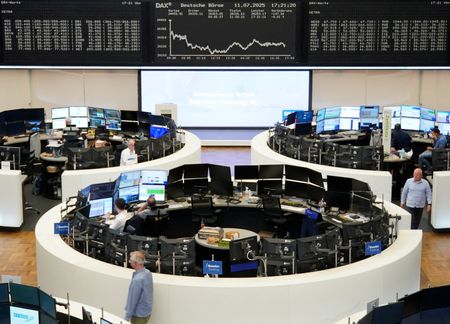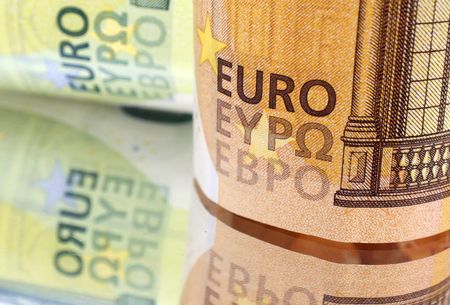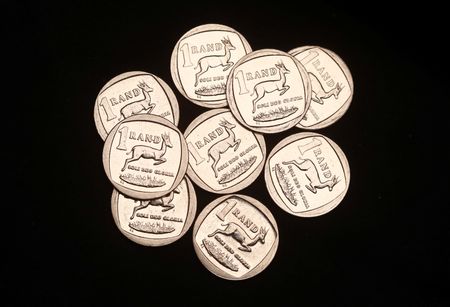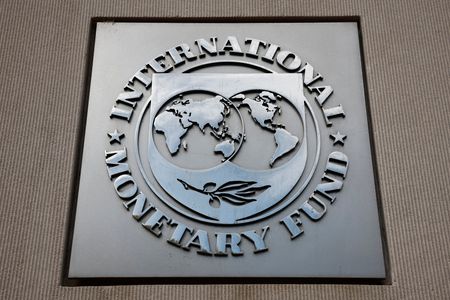By Marc Jones
LONDON (Reuters) – Europe’s major bourses made modest gains and the euro fell on Monday as investors greeted a trade agreement between the U.S. and European Union with cautious relief at the start of an action-packed week for markets.
The STOXX 600 touched a four-month high with a slender 0.5% rise, while the euro slid 0.7% against the dollar in what was shaping up to be the biggest hit to this year’s 10% rally since May.
The framework trade deal, which European Commission President Ursula von der Leyen described as the best the bloc could get, will impose a 15% import tariff on most EU goods and see the EU spend $600 billion on U.S. investments while opening up some important parts of its market.
“The deal is better than the 30%-50% tariff rates threatened over the last couple of months, although it is probably as bad as the universal tariff rates being discussed late last year,” ING analyst Chris Turner said.
While the U.S.-EU deal averts a more damaging standoff between the two blocs, which account for almost a third of global trade, a number of European capitals complained it was lopsided in favour of Washington.
Other major economies are still scrambling to finalise deals ahead of Trump’s August 1 deadline.
Talks between the U.S. and China in Stockholm on Monday are expected to lead to the two sides extending their trade truce for another 90 days, while Europe’s deal comes hot on the heels of one struck with Japan last week.
MUFG FX strategist Derek Halpenny said the EU deal was ultimately “good news from a financial markets perspective as it reduces uncertainty further still ahead of 1st August, which is now looking like an insignificant date”.
Apolline Menut at fund manager Carmignac meanwhile called it a win for the U.S., given the forced purchases of U.S. energy and military equipment and zero tariff retaliation by Europe.
“This isn’t a trade breakthrough – it’s damage control for the sake of diplomatic pragmatism,” she said. “The economic cost may sting, but the strategic calculus is brutally rational.”
Germany’s exporter-heavy DAX and France’s CAC 40 had also risen early on but had sagged back into negative territory by early afternoon trading, while S&P 500 and Nasdaq futures pointed to fresh record highs on Wall Street when it resumes.
The euro had also strengthened as Asian markets reopened, but it too dropped deeper into the red as the dollar nudged higher across the board. [/FRX]
Euro area government bond yields, which are a proxy for borrowing costs, also edged down.
Germany’s 10-year yield, the euro area’s benchmark, was 0.5 basis points lower at 2.71% after rising more than 10 basis points at the end of last week when the European Central Bank curbed talk of imminent rate cuts.
FED, BOJ AWAIT
Wall Street’s S&P 500, Nasdaq and Dow futures were between flat and 0.3% higher as the weekend’s EU deal sealed at Donald Trump’s golf course in Scotland added to ones struck with Japan, Indonesia and the Philippines in Asia last week.
Analysts at Morgan Stanley said the probability of the S&P now reaching their “bull case” of 7,200 points by mid next year had gone up, although was “not without risks” given possible tariff-driven inflation and high long-term U.S. bond yields.
Overnight in Asia, MSCI’s broadest index of regional shares ended 0.3% weaker, with Japan’s Nikkei falling back more than 1% after it hit a one-year high last week. [.T]
The Australian dollar, often seen as a proxy for global risk appetite, was at $0.657, hovering around the near eight-month peak it had scaled.
Traders are also waiting for interest rate decisions from both the U.S. Federal Reserve and Bank of Japan, monthly U.S. non-farm payrolls, and earnings from megacap companies Apple, Microsoft and Amazon.
While the Fed and the BOJ are expected to maintain rates, comments from the officials will be crucial for investors to gauge the interest rate path. The trade deal with Japan has opened the door for the BOJ to raise rates again this year.
Meanwhile, the Fed is likely to be cautious on any rate cuts as officials seek more data to determine the impact of tariffs on inflation before they ease rates further.
But tensions between the White House and the central bank over monetary policy have increased, with Trump repeatedly lashing out at Fed Chair Jerome Powell for not cutting rates. Two of the Fed Board’s Trump appointees have articulated reasons for supporting a rate cut this month.
In commodities, oil prices rose after the U.S.-EU trade agreement. Brent crude futures and U.S. West Texas Intermediate crude were both up 0.5%. [O/R]
Gold prices eased 0.1% to $3,334 an ounce, their lowest in nearly two weeks, on reduced appetite for traditional safe havens. [GOL/]
(Additional reporting by Ankur Banerjee and Gregor Stuart Hunter in Singapore; Editing by Joe Bavier and Jan Harvey)










